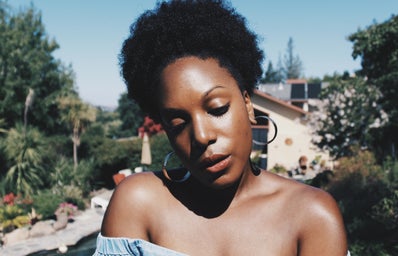The bigger the hoop, the bigger the…
Any girl who ever wore a pair of hoop earrings has heard that saying. The blatant misogyny of that statement derives from an even larger issue of racism and classism. Once a symbol of femininity and identity, the simple accessory gained a stigma of a lack of class and sophistication. Now an everyday trend worn by anyone and everyone, the hoop earring is yet another uncredited item appropriated from Black and Latinx culture
Hoop earrings have a rich history and cultural significance, dating as far back as 2500 BC in Ancient Egypt and Sumer (present-day Iraq). Through trade, the earrings grew popular in Ancient Greece, Rome, and other empires. They were worn by both royalty, civilian women and even cats. Hoops continued to prevail and hold significance in African and Native American cultures, yet died down in Europe. It wasn’t until the 1600s when jewelry and embellishment as a whole made a resurgence during the Renaissance period.
The 1900s in the United States brought an entirely new meaning upon hoops as they were traditionally worn by and associated with the Black, Latinx, and Native communities. Society began to associate hoops with “uncivilized” and “barbaric” connotations. In fact, many American women stopped wearing earrings completely as they did not want to be mistaken for an immigrant or someone of a minority group.
During the Civil Rights and Black Power movement, hoops played a crucial role as a political fashion statement. The earrings took on a defiant meaning that overtook its “ghetto” associations. Hoops showcased black women’s strength, femininity, and identity. The earrings became a signature of Josephine Baker, Angela Davis, Nina Simone, and plenty of other icons of the movement.
This iconic piece of jewelry has morphed and been passed through generations, it has upheld its symbolism of womanhood, empowerment, culture, and pride.
Sha Ravine Spencer
Hoop earrings were undoubtedly popularized by Black, Latinx, and Native persons in the United States. In such cultures, fashion and beauty journalist Sha Ravine Spencer remarks, “this iconic piece of jewelry has morphed and been passed through generations, it has upheld its symbolism of womanhood, empowerment, culture, and pride.” Yet, white people were never disgraced for wearing them unlike the aforementioned communities. Once white people began adorning hoops regularly, they become trendy and a fashion staple, adding to the egregiously long list of items stemming—or rather stolen—from Black and Latinx culture without any regard of its origin, history, or significance.


